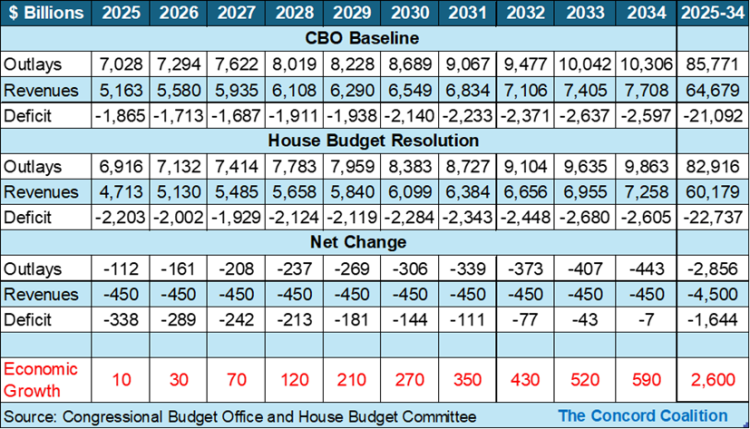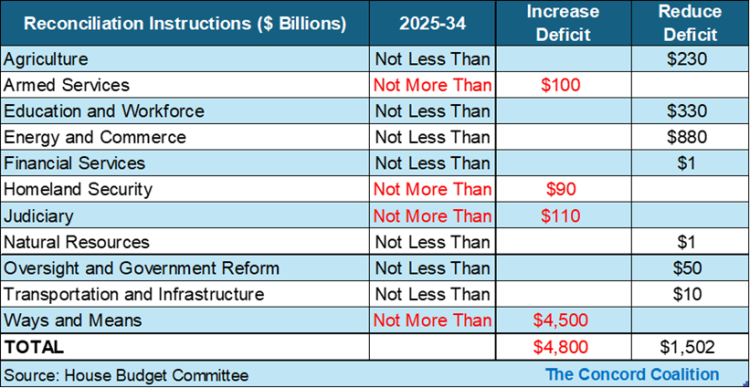This past Thursday the House Budget Committee kicked off the (sometimes) annual budget process by marking up its version of the Fiscal Year 2025 congressional budget resolution. The House version differs substantially from the Senate Budget Resolution marked up earlier this week.
Relative to current law (baseline) projections of the Congressional Budget Office (CBO), the proposed budget resolution recommends a spending reduction of $2.9 trillion and a revenue reduction of $4.5 trillion, resulting in a net deficit increase of $1.6 trillion over ten years. However, the resolution also assumes some combination of higher revenue and lower spending due to faster economic growth, resulting in $2.6 trillion in deficit reduction for a final tally of nearly $1 trillion in net deficit reduction.

The recommended spending reductions are merely illustrative and more than entirely comprised of $3 trillion in presumed savings from unidentified policies. These savings are allocated to Function 930 (Government-Wide Savings), rather than Function 920 (Allowances) that was used in the Senate budget resolution.
For purposes of enacting a reconciliation bill that is exempt from the 60-vote threshold in the Senate, the House budget resolution differs from the Senate budget resolution in several respects. It proposes $4.8 trillion in deficit increases, $1.5 trillion in deficit reduction, and a $4 trillion increase in the statutory debt limit.

During the Committee markup, an amendment was adopted that would essentially link the size of the tax cuts to the amount of deficit reduction. Specifically, the authorizing committees would be assigned $2 trillion in deficit reduction, rather than $1.5 trillion. To the extent they fall short of that amount, the $4.5 trillion of deficit increases (tax cuts) assigned to the Ways and Means Committee will be reduced dollar for dollar. Conversely, if they achieve more than $2 trillion of deficit reduction, then the $4.5 trillion of deficit increases will be increased dollar for dollar.
As these numbers indicate, the House and Senate are still far apart when it comes to reaching an agreement on the reconciliation provisions that will be contained in the budget resolution. But given the optimistic economic growth assumptions and the size of the tax cuts in the House version, and the reserve fund waiver in the Senate version, the opening positions of the respective budget committees point in the direction of growing deficits, rather than deficit reduction.




